Light Cones and Black Holes (2 of 3)
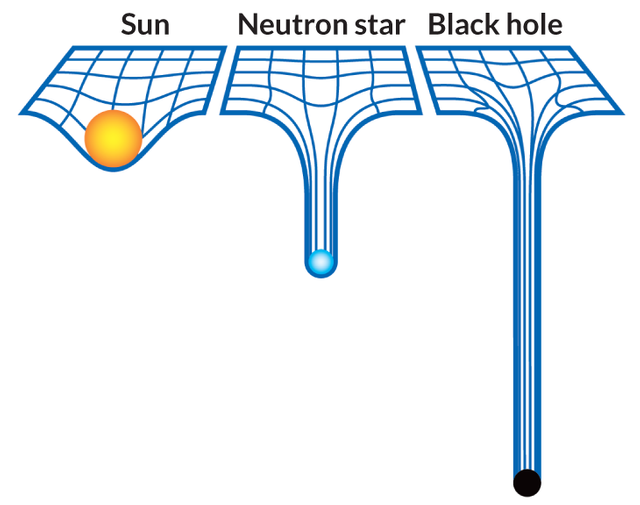
The distortion of space-time around a black hole is extreme and affects the structure of nearby light cones.
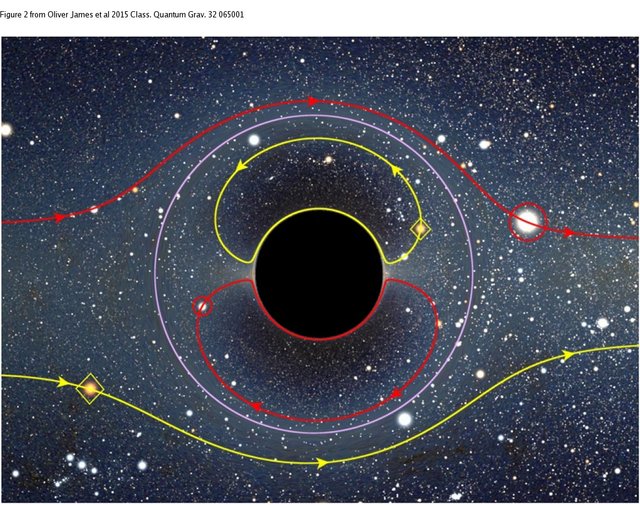
Near a point mass, light cones are tilted slightly toward the mass. The closer the mass, the greater the tilt. Up to a point, light can go toward the mass or away from it, but at the event horizon, light is entirely tilted toward the mass. The event horizon is visualized as a spherical surface around the point mass. It is not a physical surface, just a mathematical borderline.
What happens when an object falls through this mathematically defined surface and emits a flash of light?
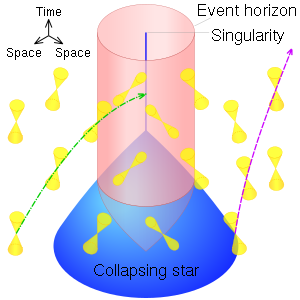
All the light emitted in all directions is bent inward, toward the central point mass. No light information can ever return to the outside world. Because the light cone is entirely within the event horizon. The geometry of space-time hides the event from us. What would an outside observer see when an object falls into a black hole? Imagine a probe that transmits regular radio signals being launched toward a black hole. First, we see the probe fall inward, accelerating toward the hole. As the probe approaches the event horizon, it appears to slow down. Similarly, the time between each of the probe’s signals seems longer and longer. The light from probe rapidly dims and shifts toward the red, until the probe finally fades from our view just outside the event horizon. The radio signals finally cease.
What happens from the probe’s point of view as it approaches the black hole?
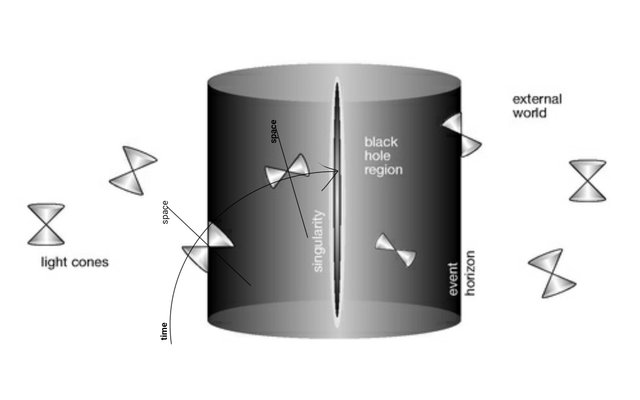
Time appears to progress normally as the probe crosses the event horizon quickly and easily. There is nothing to mark the event horizon; it is not a tangible surface, although it is the point of no return. Because of the extreme curvature of space-time near a point mass, gravity is much stronger at the probe’s nose than at its tail. Tidal forces begin to pull the probe apart. The probe is pulled inexorably toward the mass at the center, a point of infinite density and infi nite space-time curvature. This point is called a singularity, a kind of cusp or edge to the universe of space-time. The probe is sucked into the singularity and destroyed, not because of the gravitational force but because of the extraordinary distortion of space-time.
If we cannot see black holes, how do we know they really exist?
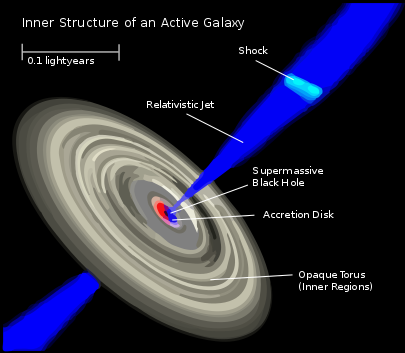
Matter being pulled into a black hole is compressed and heated before crossing the horizon. This can be detected as a rapidly fl uctuating X-ray source. The gravity of a black hole affects the motions of nearby objects, so its presence can be inferred from their behavior.
This view of black holes does not take quantum physics into account.
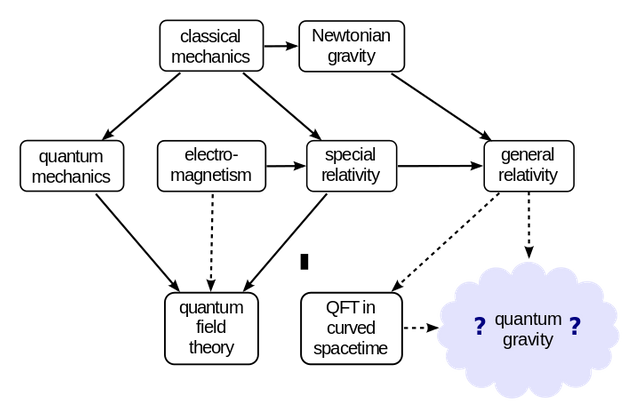
We still do not have a well-understood, generally accepted quantum theory of gravity. If light cones can be bent by black holes, maybe they can be bent in an even more radical way. Perhaps we can use curved space-time as a short cut and evade the apparent limitation of the speed of light, or, more disturbingly, twist the light cone structure around to make causal loops!
Are warp drive and time travel possible after all?
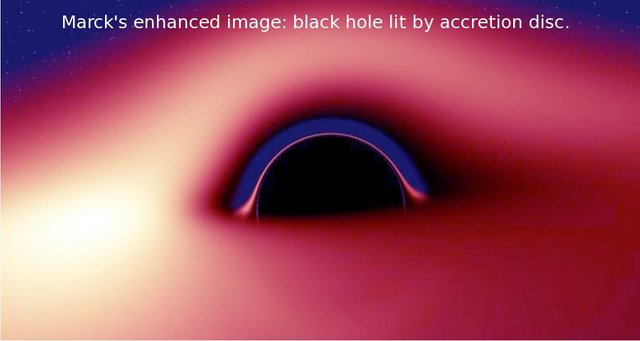
END PART 2 OF 3
Light Cones and Black Holes (1 of 3)
Light Cones and Black Holes (2 of 3)
Light Cones and Black Holes (3 of 3)
Thanks for sharing this material. I like what you posted. Thank you so much